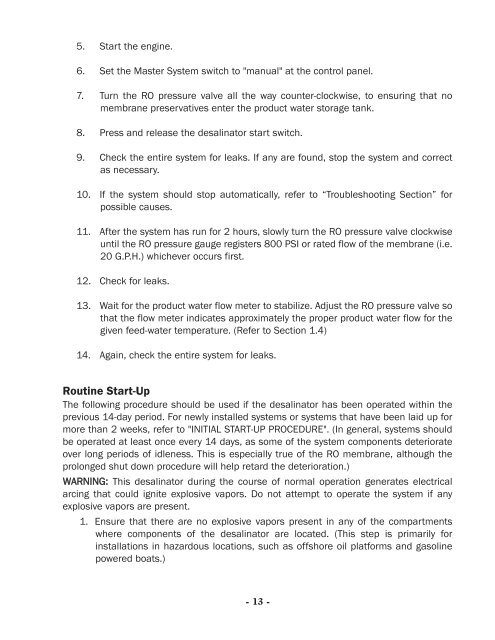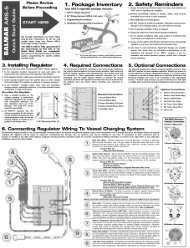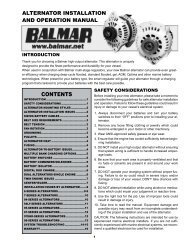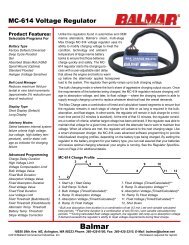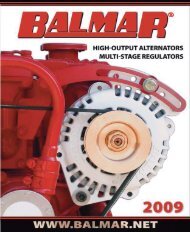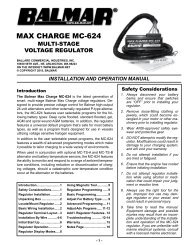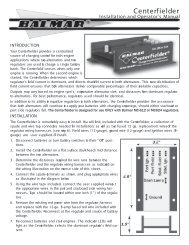Create successful ePaper yourself
Turn your PDF publications into a flip-book with our unique Google optimized e-Paper software.
5. Start the engine.6. Set the Master System switch to "manual" at the control panel.7. Turn the RO pressure valve all the way counter-clockwise, to ensuring that nomembrane preservatives enter the product water storage tank.8. Press and release the desalinator start switch.9. Check the entire system for leaks. If any are found, stop the system and correctas necessary.10. If the system should stop automatically, refer to “Troubleshooting Section” forpossible causes.11. After the system has run for 2 hours, slowly turn the RO pressure valve clockwiseuntil the RO pressure gauge registers 800 PSI or rated flow of the membrane (i.e.20 G.P.H.) whichever occurs first.12. Check for leaks.13. Wait for the product water flow meter to stabilize. Adjust the RO pressure valve sothat the flow meter indicates approximately the proper product water flow for thegiven feed-water temperature. (Refer to Section 1.4)14. Again, check the entire system for leaks.Routine Start-UpThe following procedure should be used if the desalinator has been operated within theprevious 14-day period. For newly installed systems or systems that have been laid up formore than 2 weeks, refer to "INITIAL START-UP PROCEDURE". (In general, systems shouldbe operated at least once every 14 days, as some of the system components deteriorateover long periods of idleness. This is especially true of the RO membrane, although theprolonged shut down procedure will help retard the deterioration.)WARNING: This desalinator during the course of normal operation generates electricalarcing that could ignite explosive vapors. Do not attempt to operate the system if anyexplosive vapors are present.1. Ensure that there are no explosive vapors present in any of the compartmentswhere components of the desalinator are located. (This step is primarily forinstallations in hazardous locations, such as offshore oil platforms and gasolinepowered boats.)- 13 -


